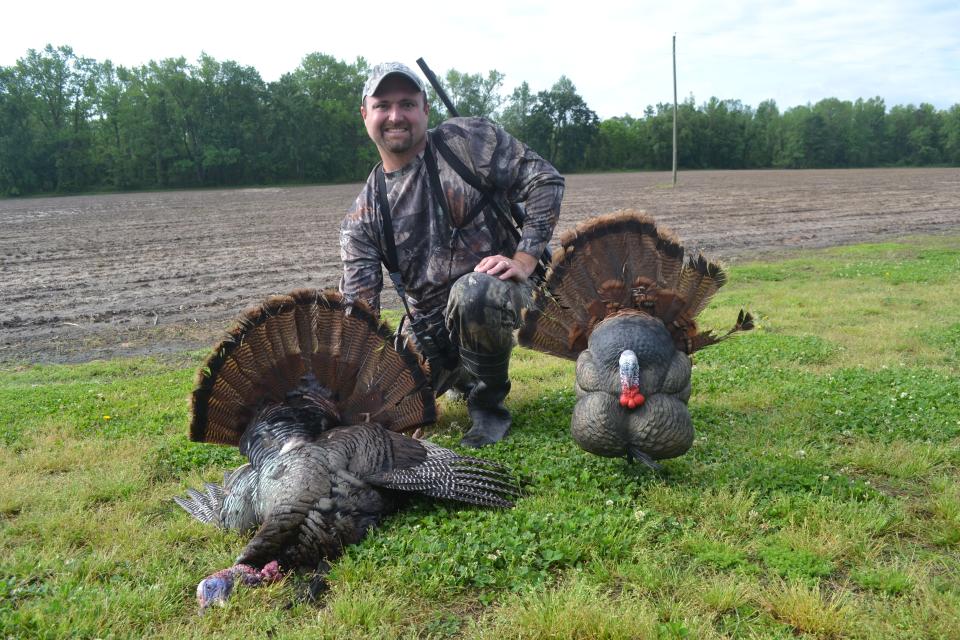Reaping and fanning gobblers on turkey hunts can be effective but also dangerous
Reaping and fanning gobblers are situational tactics in spring turkey hunting commonly used when a gobbler is spotted and the hunter advances upon him behind a strutting tom decoy or simply a tail fan. Though not slam-dunk maneuvers, they're surprisingly effective, as the competitive juices of a longbeard short-circuit the bird’s usually strong senses as he charges the creeping hunter, offering a close-up shot.
It's really quite an exhilarating hunt. My first reaped gobbler was a monster eastern from southeast North Carolina. He had habitually stationed himself in a cut cornfield with no options for a traditional set-up. So, I waded through a flooded irrigation ditch, popping out within 150 yards in plain sight of the gobbler and his girlfriends with a strutting jake decoy as my only cover.
After calling twice, his head flicked bright white and red as he abandoned his harem and ran at me with a face as angry as a turkey can make. The mount in my office captured the moment perfectly. I've reaped a few gobblers since, but I'd say I'm at a success rate of under 50%, learning that certain places and birds are more prone to this working.
Foreign affairs: If you go hunting in Spain, you might be out looking for Mouflon sheep

While I find it fun, these practices are not without controversy. Some folks blame them for declining turkey populations, a theory supported mostly by anecdotal and circumstantial evidence. Others have argued its not “real” turkey hunting, whatever the heck that means.
But, one viewpoint on which sportsmen commonly concede is that reaping and fanning can be dangerous. Nationwide, and even before this was en vogue, turkey hunting has long ranked towards the top of the list of accidental shooting-related injuries among the various kinds of hunting.
The reasons are pretty straight-forward - hunters camouflage themselves, use realistic decoys, and mimic turkey sounds to draw in gobblers. Reaping increases the risk by placing a strutting gobbler look-alike near your face.
Purportedly for these safety reasons, FWC has proposed a rule change for 2024-25 that will ban reaping and fanning on Wildlife Management Areas (WMAs). This is one of dozens of annual changes solicited for public input. These proposals range from statewide regulations to amending rules and seasons on specific properties.
Among the statewide proposals are requiring special permits for deer-dog hunters on public lands; modifying the requirements for legal evidence of deer and turkey harvests; and allowing gray squirrel hunting year-round on lands outside of the WMA system.
To review and comment comment on any of the proposed changes, please follow this link: myfwc.com/about/rules-regulations/proposed-rule-changes/
But back to reaping and turkeys – at least partial bans already exist in Alabama and South Carolina, among several other states. Frankly, I loathe more restrictions on hunting and fishing here in the Free State of Florida. If this is for safety sake, well, so be it, but I'd prefer the rule to be more site-specific rather than a general ban as not all WMAs are equal.
This article originally appeared on The Ledger: Reaping and fanning gobblers on turkey hunts are effective but dangerous

